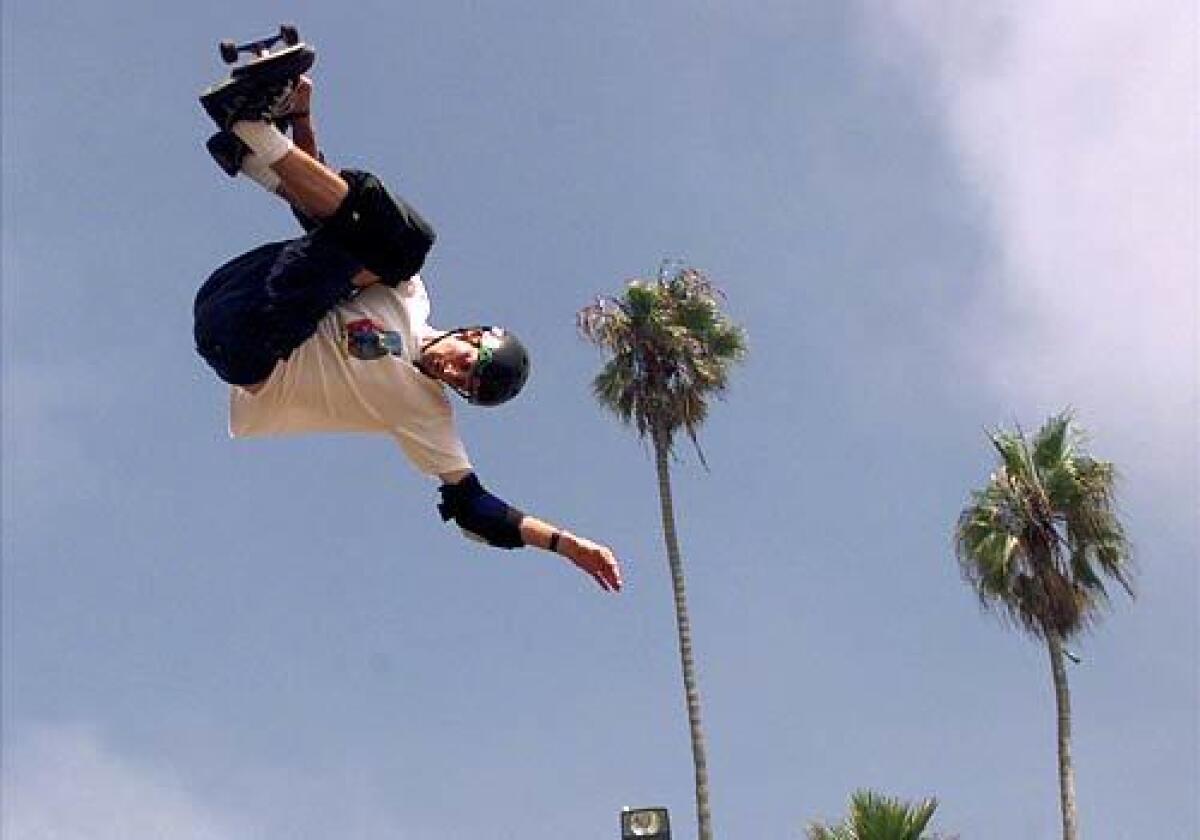Skateboarders, the free radicals

ONLY in Southern California could a cultural revolution be started by ragtag 11-year-olds. Not that these 11-year-olds had any idea what they were doing. No, these prepubescent “skateboarders” were just surfers who, in 1972, after the waves had blown out around the dilapidated piers of Pacific Ocean Park, took their moves and transferred them from water to concrete. Thirty-four years later, that simple act has led to a $5-billion industry, with more than 12 million U.S. skateboarders doing Ollies up and over whatever is in their path.
From the perspective of the present, it’s hard to imagine how youth culture could exist without shaggy-haired, skinny-pants skateboarders wheeling across the pavement.
But if it weren’t for L.A.’s unique topography and climate, the X Games might never have been invented, Tony Hawk might not have become a household name, and adults in neighborhoods across the country wouldn’t be complaining about all that noise on the sidewalks outside.
It was at Santa Monica’s Bicknell Hill in the early and mid-1970s that skateboarding was first elevated from its flat riding grounds.
Eventually, the locus shifted to the bermed school playgrounds on L.A.’s Westside. Where students played dodge ball and chased each other around by day, a group of kids known as the Z-Boys spent the after hours carving banked asphalt at Brentwood Elementary, Kenter Canyon Elementary, Mar Vista Elementary and the big kahuna — Paul Revere Middle School, where a gigantic sloping wall was dubbed Waimea Bay.
The California drought of the mid-1970s took skateboarding to an even gnarlier level. Because Los Angeles is a desert, thousands of gracefully curved swimming pools throughout the city were left empty as a conservation strategy.
These empty pools, which were often broken into, soon became the skate spots of preference, setting up an illicit allure and aesthetic that continue to define skateboarding to this day.
More to Read
Go beyond the scoreboard
Get the latest on L.A.'s teams in the daily Sports Report newsletter.
You may occasionally receive promotional content from the Los Angeles Times.










